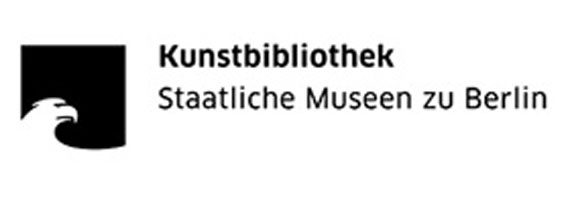The Museum für Fotografie (Museum of Photography) has been a magnet for photography enthusiasts from all over the world since its opening in 2004. In the last few years alone, over 1 million visitors have flocked to see the exhibitions presented at the museum by the Kunstbibliothek’s Collection of Photography and the Helmut Newton Foundation. These two institutions have 2000 square metres of exhibition space at their disposal in which to present exciting exhibitions on diverse topics in the history of photography.
The Helmut Newton Foundation occupies the two lower floors in the building and has for many years presented its hugely successful permanent exhibition 'Helmut Newton’s Private Property', as well as individual exhibitions on Helmut Newton’s work, his wife Alice Springs, and his contemporaries, including: 'Helmut Newton: Sex and Landscapes', 'Newton, Nachtwey, Lachapelle: Men, War & Peace', 'Pigozzi and the Paparazzi', and 'Helmut Newton Polaroids'.
In the Kaisersaal on the museum’s second floor, the Kunstbibliothek’s Collection of Photography presents a series of rotating exhibitions that explore the medium of photography in all its protean forms. From 2004 to 2008, the Kaisersaal’s prevailing state of ruin formed a strikingly unusual venue for contemporary art and photography exhibitions. A string of photographers and artists – Raimund Kummer, M+M, Philipp Schönborn, Boris Hars-Tschachotin and Hannes Nehls, Regina Schmeken, Reiner Leist, Raymond Depardon and Simone Mangos – designed spectacular installations specifically for the room that had been severely damaged in the Second World War. Their exhibitions always tested the very limits of photography, its relation to other media such as sculpture and film, as well as its relation to religion and history.
Das Museum für Fotografie ist seit seiner Eröffnung 2004 zu einem Publikumsmagneten für Fotografiebegeisterte aus aller Welt avanciert. Über eine Million Besucher zogen in den letzten Jahren die Ausstellungen an, mit denen die Sammlung Fotografie der Kunstbibliothek und die Helmut Newton Foundation hier insgesamt 2.000 Quadratmeter bespielen.
Die Helmut Newton Foundation zeigt auf den beiden unteren Etagen des Gebäudes die seit Jahren erfolgreiche Dauerpräsentation "Helmut Newton’s Private Property" und Ausstellungen zum Werk Helmut Newtons, seiner Frau Alice Springs und seiner Weggefährten: von "Helmut Newton: Sex and Landscapes" über "Newton, Nachtwey, Lachapelle: Men, War & Peace" bis zu "Pigozzi and the Paparazzi" und "Helmut Newton Polaroids".
Die Sammlung Fotografie der Kunstbibliothek bietet im Kaisersaal im zweiten Obergeschoss wechselnde Ausstellungen zum Medium Fotografie in breiter thematischer Vielfalt. Die beeindruckende Ruine des Kaisersaals bot von 2004 bis 2008 einen ungewöhnlichen Ort für zeitgenössische Kunst und Fotografie in Ausstellungen der Sammlung Fotografie der Kunstbibliothek. Fotografen und Künstler, Raimund Kummer, M+M, Philipp Schönborn, Boris Hars-Tschachotin und Hannes Nehls, Regina Schmeken, Reiner Leist, Raymond Depardon und Simone Mangos, entwarfen spektakuläre Installationen in Auseinandersetzung mit dem während des Zweiten Weltkriegs beschädigten Raum. Immer wurden mit den Ausstellungen auch die Grenzbereiche der Fotografie ausgelotet, wurde nach den Beziehungen des Mediums zu Skulptur und Film, zu Religion und Geschichte gefragt.�
The Helmut Newton Foundation occupies the two lower floors in the building and has for many years presented its hugely successful permanent exhibition 'Helmut Newton’s Private Property', as well as individual exhibitions on Helmut Newton’s work, his wife Alice Springs, and his contemporaries, including: 'Helmut Newton: Sex and Landscapes', 'Newton, Nachtwey, Lachapelle: Men, War & Peace', 'Pigozzi and the Paparazzi', and 'Helmut Newton Polaroids'.
In the Kaisersaal on the museum’s second floor, the Kunstbibliothek’s Collection of Photography presents a series of rotating exhibitions that explore the medium of photography in all its protean forms. From 2004 to 2008, the Kaisersaal’s prevailing state of ruin formed a strikingly unusual venue for contemporary art and photography exhibitions. A string of photographers and artists – Raimund Kummer, M+M, Philipp Schönborn, Boris Hars-Tschachotin and Hannes Nehls, Regina Schmeken, Reiner Leist, Raymond Depardon and Simone Mangos – designed spectacular installations specifically for the room that had been severely damaged in the Second World War. Their exhibitions always tested the very limits of photography, its relation to other media such as sculpture and film, as well as its relation to religion and history.
Das Museum für Fotografie ist seit seiner Eröffnung 2004 zu einem Publikumsmagneten für Fotografiebegeisterte aus aller Welt avanciert. Über eine Million Besucher zogen in den letzten Jahren die Ausstellungen an, mit denen die Sammlung Fotografie der Kunstbibliothek und die Helmut Newton Foundation hier insgesamt 2.000 Quadratmeter bespielen.
Die Helmut Newton Foundation zeigt auf den beiden unteren Etagen des Gebäudes die seit Jahren erfolgreiche Dauerpräsentation "Helmut Newton’s Private Property" und Ausstellungen zum Werk Helmut Newtons, seiner Frau Alice Springs und seiner Weggefährten: von "Helmut Newton: Sex and Landscapes" über "Newton, Nachtwey, Lachapelle: Men, War & Peace" bis zu "Pigozzi and the Paparazzi" und "Helmut Newton Polaroids".
Die Sammlung Fotografie der Kunstbibliothek bietet im Kaisersaal im zweiten Obergeschoss wechselnde Ausstellungen zum Medium Fotografie in breiter thematischer Vielfalt. Die beeindruckende Ruine des Kaisersaals bot von 2004 bis 2008 einen ungewöhnlichen Ort für zeitgenössische Kunst und Fotografie in Ausstellungen der Sammlung Fotografie der Kunstbibliothek. Fotografen und Künstler, Raimund Kummer, M+M, Philipp Schönborn, Boris Hars-Tschachotin und Hannes Nehls, Regina Schmeken, Reiner Leist, Raymond Depardon und Simone Mangos, entwarfen spektakuläre Installationen in Auseinandersetzung mit dem während des Zweiten Weltkriegs beschädigten Raum. Immer wurden mit den Ausstellungen auch die Grenzbereiche der Fotografie ausgelotet, wurde nach den Beziehungen des Mediums zu Skulptur und Film, zu Religion und Geschichte gefragt.�



